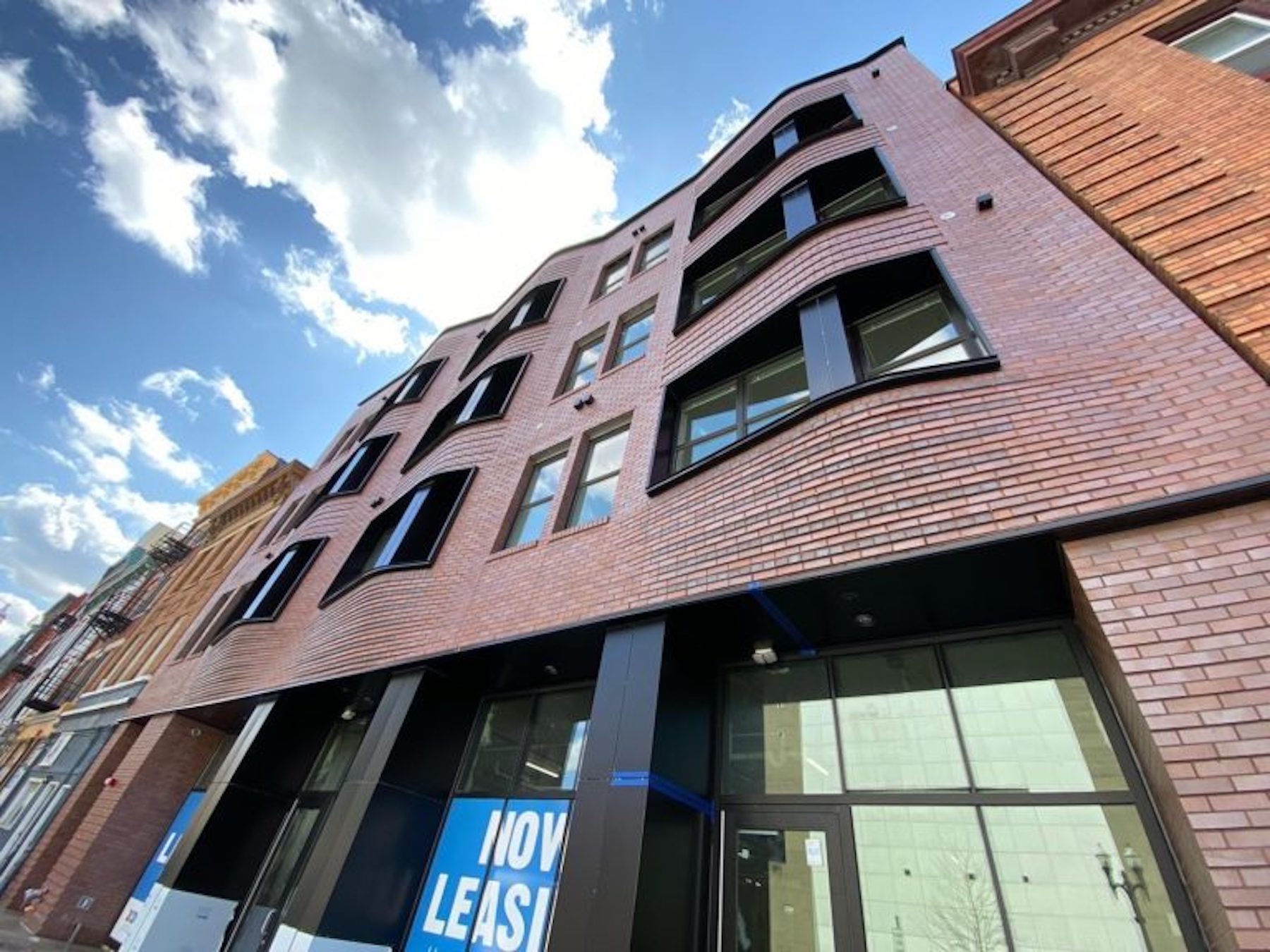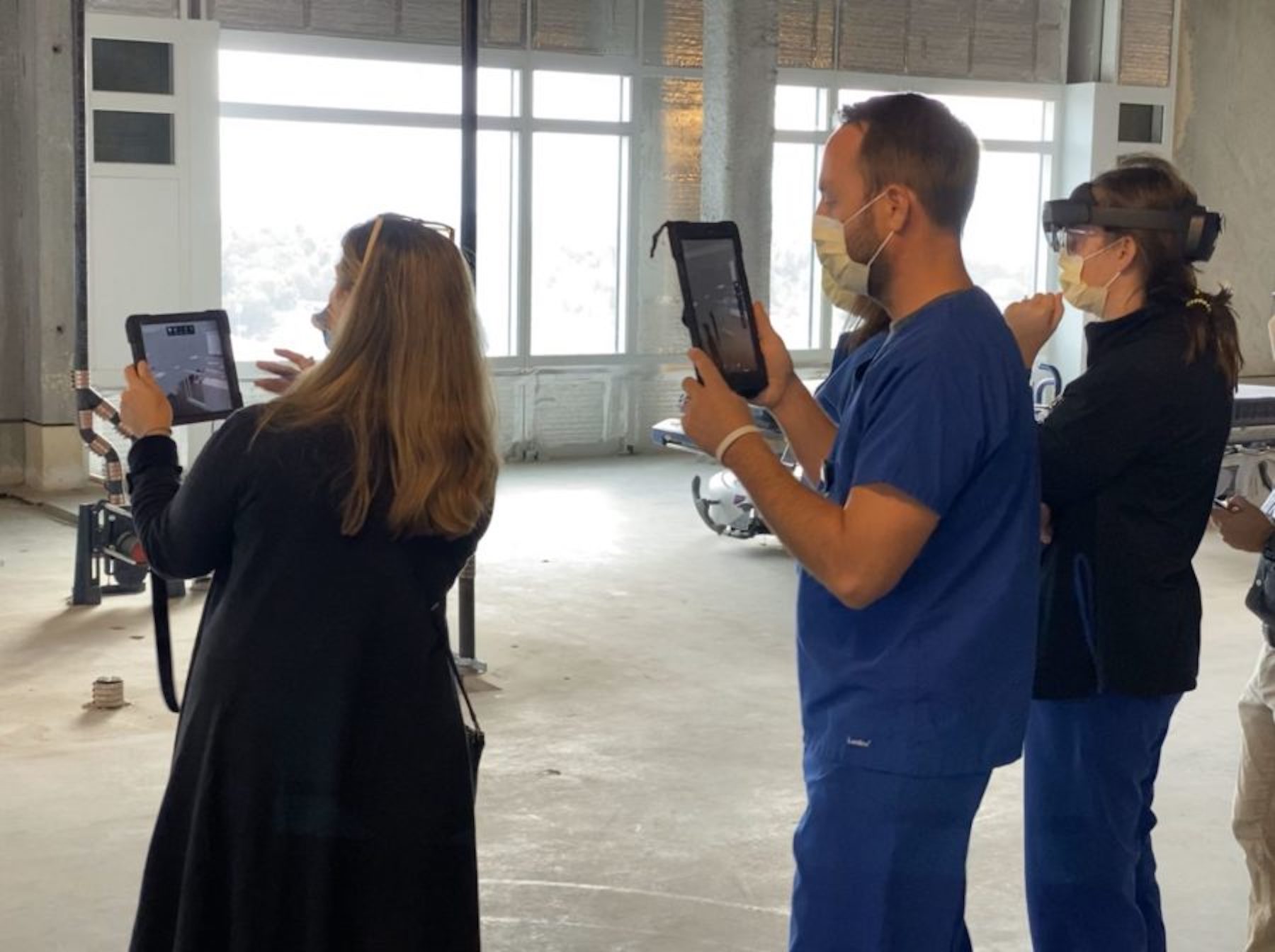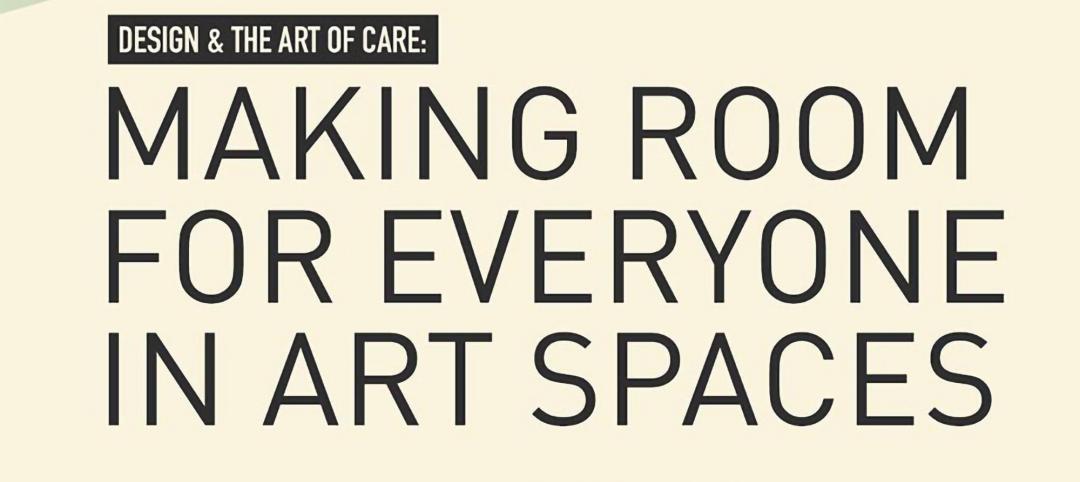By solving a long-standing communication problem, Augmented Reality (AR) is poised to make architecture quicker, nimbler, and more cost effective.
The problem: How do you represent three-dimensional space in a two-dimensional medium (like paper)? Architects have struggled with this problem for a long time, especially as they seek to communicate with clients.
Architecture has developed a whole graphic language in response to this problem. Through drawings, diagrams, plans, sections, elevations, and renderings, architects strive to communicate different aspects of a design. However, interpreting these representations requires a level of ‘fluency’—a familiarity with the conventions—that most clients lack.
The AR solution: AR can help architects cut through this difficulty by delivering a full-scale design model that end-users can navigate together in real time and space. An intuitive, easy to understand mode of communicating, AR can bridge the interpretive gap, enabling the project team to gather better feedback, resolve construction and maintenance issues before they happen, and save our clients money.
What exactly is AR? And how do architects use it?
The same technology that has enabled millions to catch wild Pokémon on the streets of their cities, also allows architects and their clients to stand in the shell of a building and see where the design calls for doors, walls, and windows.
AR allows us to make intuitive design decisions in real-time & in real space
Distinct from virtual reality, which immerses its user in a fully digital world, augmented reality enhances an existing, real-world environment with an overlay of digital information that allows you to see the digital and the real at the same time. AR can use goggles, tablets, or smartphones (whichever best suits the viewing experience) to show where different design elements would appear within the actual space.
This is especially valuable to designers, because it taps into a client’s intuitive and embodied understanding of the world rather than their ability to read an architectural drawing.
Better feedback & decisions
We recently used AR to present the design of a Medical ICU fit-out on the 12th floor of UK HealthCare’s Chandler Hospital. This process significantly increased participant engagement as we stood within the shell of the space. A myriad of comments like, “oh… that’s what that would look like” or “that’s what the drawing meant…” made it clear that the end-users understood the design with more confidence. It’s one thing to know abstractly that patient rooms have windows of a given dimension that are located so far off the ground. It’s quite another experience to stand in the building core (where the central nursing station would be located) and look down the hall to see what kind of a view that provides.
AR technology also allows for manipulation in real time. For instance, to help the client decide between different design options, you can set up the AR model so that certain features can be turned on and off or so options can be seen side by side. At UK HealthCare, we were able to explore different configurations for patient room entries by changing the spacing of the window and door, and the direction of the door’s swing within adjacent rooms. This enabled medical staff to ‘sit’ at the nurse station and test which window placement provided the ideal view to support their workflow and patient care. We did the same with different headwall configurations.
Tapping into that intuitive understanding of space is especially valuable for healthcare clients, because their frequently repeated procedures (e.g., checking vitals and charting patient records) enable them to feel when the space is working or not. But this value is not limited to healthcare clients. We also recently used an AR model to enable a theater company to see how different lobby and concessions configurations would help them manage the pre-show and intermission crush of activity they experience.
Smoother construction, easier maintenance, & new possibilities
It’s not just end-users who benefit from the application of AR in architecture. AR models can enable better collaboration between designers, contractors, and facilities management departments by enabling us to view a building’s infrastructure together before it’s built.
Being able to view where airducts, plumbing lines, and wiring will be run, we can head off conflicts, better phase construction, and ensure that construction proceeds without costly delays. Feedback from facilities personnel can also help us ease ongoing maintenance processes.
AR models have even helped us expand what is buildable. When designing Willkommen (a mixed-use project with a large affordable housing component), we used an AR model to work with a mason to produce a striking and highly unusual brick geometry (above). Augmented reality not only enabled the mason to produce a new effect with a familiar material, but because we were able to do this ahead of time, it staved off the premium associated with new methods of construction – keeping costs low.
Saving clients money
AR models are not the first or only models to tap into a client’s intuitive sense of space.
Hospitals, for instance, will rent warehouse space to create full-scale, foam mockups of a new department. Like AR, this allows healthcare teams to run simulations and evaluate the space, but it is much more time-consuming to produce and expensive to store. AR models, on the other hand, are produced quickly and don’t require you to sign a lease in order to store them.
From quick iterations and testing to better collaboration, construction and communication, AR models are changing the way architects work and they’re opening a new world of design possibilities.


More from Author
GBBN | Sep 12, 2024
How space supports programming changes at university libraries
GBBN Associate Sarah Kusuma Rubritz, AIA, uses the University of Pittsburgh's Hillman Library to showcase how libraries are transforming to support students’ needs.
GBBN | Jul 3, 2024
New science, old buildings: Renovating for efficiency, flexibility, and connection
What does the research space of the future look like? And can it be housed in older buildings—or does it require new construction?
GBBN | Jun 3, 2024
Insights for working well in a hybrid world
GBBN Principal and Interior Designer Beth Latto, NCIDQ, LEED AP, ID+C, WELL AP, share a few takeaways, insights, and lessons learned from a recent Post Occupancy Evaluation of the firm's Cincinnati, Ohio, office.
GBBN | Feb 26, 2024
GBBN's Inflation Reduction Act Calculator goes live
GBBN has publicly released its IRA Calculator, a tool that helps you understand funding opportunities in the IRA for sustainable design.
GBBN | Jan 25, 2024
Tactical issues for renovating university research buildings
Matthew Plecity, AIA, ASLA, Principal, GBBN, highlights the connection between the built environment and laboratory research, and weighs the benefits of renovation vs. new construction.
GBBN | Dec 14, 2023
What's next for affordable housing in 2024?
As 2023 draws to a close, GBBN’s Mary Jo Minerich and Amanda Markovic, AIA sat down to talk about the future. What’s next in terms of trends, technology, and construction of affordable housing?
GBBN | Oct 11, 2023
Leveraging land and light to enhance patient care
GBBN interior designer Kristin Greeley shares insights from the firm's latest project: a cancer center in Santa Fe, N.M.
GBBN | Aug 31, 2023
Small town takes over big box
GBBN associate Claire Shafer, AIA, breaks down the firm's recreational adaptive reuse project for a small Indiana town.
GBBN | Jun 20, 2023
Designing arts spaces that curate inclusivity
GBBN's Julia Clements and Marcene Kinney, AIA, LEED AP, talk tips for designing inclusive arts spaces.
GBBN | Mar 22, 2023
Onsite prefabrication for healthcare construction: It's more than a process, it's a partnership
Prefabrication can help project teams navigate an uncertain market. GBBN's Mickey LeRoy, AIA, ACHA, LEED AP, explains the difference between onsite and offsite prefabrication methods for healthcare construction projects.
















